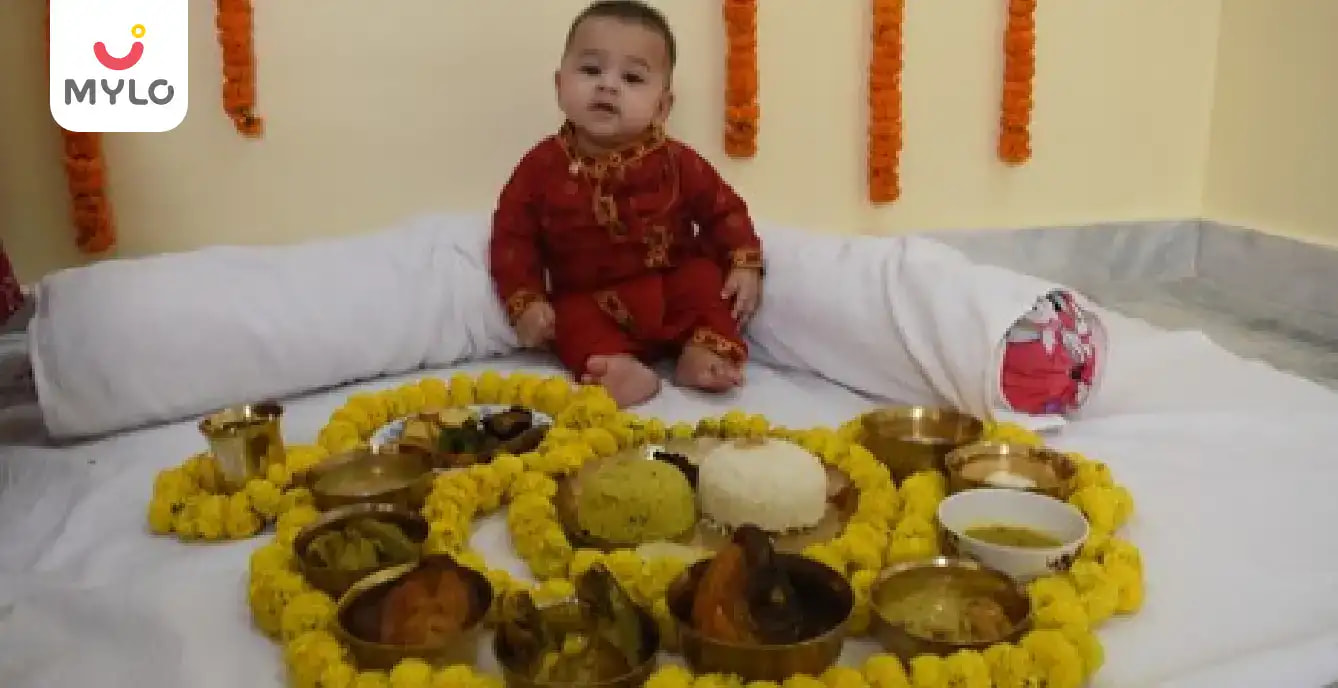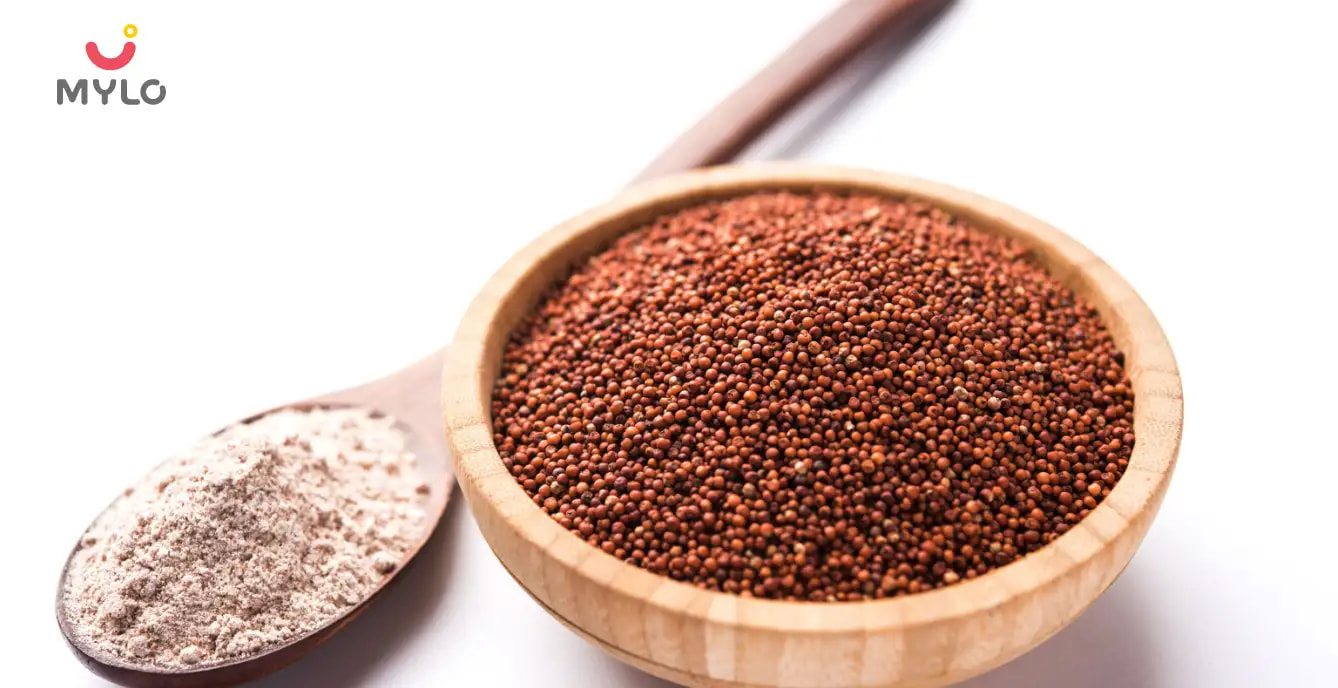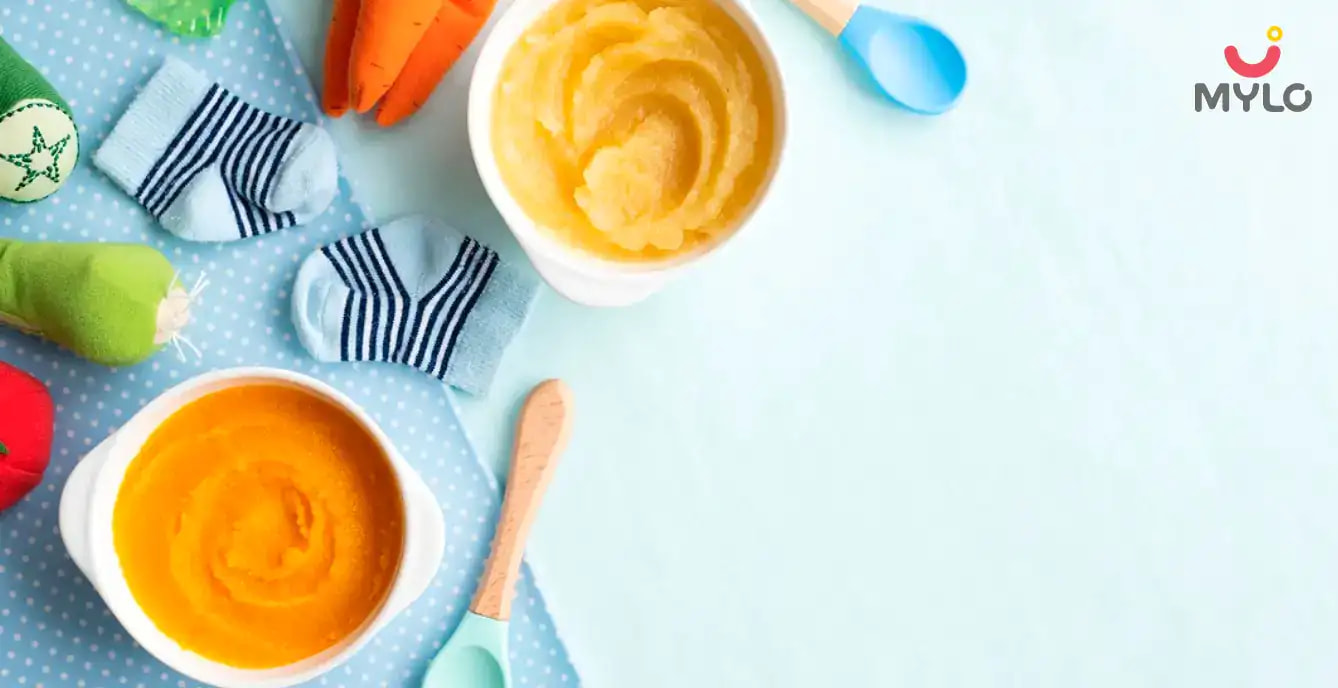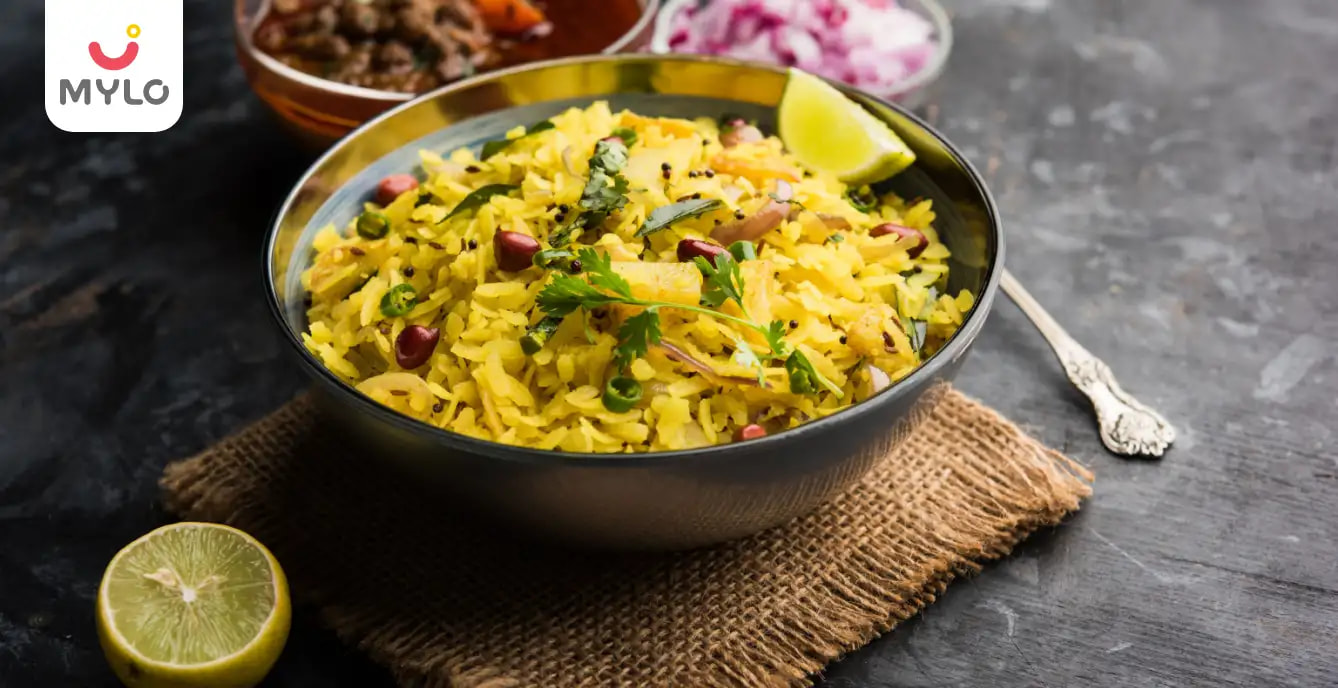Home

Baby Care

Annaprasan: Baby’s First Rice Eating Ceremony
In this Article

Baby Care
Annaprasan: Baby’s First Rice Eating Ceremony
Updated on 3 November 2023
The Sanskrit word ‘Annaprasan’ symbolises growing crops. This ritual marks the beginning of the life of a baby. This ritual holds great importance in Bengali culture and is performed when a child starts to consume solid food, instead of breastmilk. In this article, we will understand everything you need to know about your baby’s annaprasan ceremony.
What is the Annaprasan ritual?
Any class of Bengali culture perform this ritual with honesty, purity, and capability. Considering the traditional point of view, ‘annaprasan’ is often treated as an auspicious and grand celebration like marriage though some may choose to celebrate this ritual in a homely atmosphere or in a temple by offering the ‘Prasad’ of God to the child as their first solid food. People who like to celebrate it in a temple, mostly opt for ‘bhoger prasad’.
The occasion can be celebrated in different ways. People celebrating this ritual offer their blessings to the newborn baby through different gifts. Rationally, it can even be said that this particular occasion helps to introduce the newborn to family, friends, and relatives. In the Bengali language, it is called ‘mukhe vaat,’ denoting the first time a child eats rice to start their journey towards solid food. This celebration appreciates the transformation.
When is the Annaprasan performed?
The ritual, though the same for both girls and boys, is performed at different times. For a girl child the occasion takes place in odd months like 5 or 7 months, whereas, for a boy, it is generally performed in an even month like 6 or 8.
The tradition is considered a pious and religious occasion; hence, the date is generally fixed by ‘panjika’ to retain all its good vibes. The occasion even conveys regards to gods and goddesses as well as ancestors to bestow their blessing and confirm health and wealth for the newborn.
Where is the Annaprasan performed?
The occasion is traditionally performed at the maternal uncle's house. However, many parents may even choose to celebrate their baby’s annaprasan in their own house and afterwards ‘mama vat’ can be celebrated for the same occasion.
How is the Annaprasan performed?
The tradition starts with making an arrangement on the floor with ‘ashana’ and the place is lit by a lamp, cotton, and ghee to confirm fortune as the lamp is considered a symbol of fortune in the Hindu religion. The smell of ghee, on the other hand, purifies the entire environment.
The food for the child is served with silver cutlery. In Bengali tradition, ‘annaprasan’ is mainly symbolised with ‘payes’ as this is the main item just like the birthday cake in a birthday celebration.
As Bengalis are great foodies, the newborn must be introduced to that for which different types of foods are served to the child. There are usually seven types of food items, like potato fry, brinjal fry, pumpkin fry, spinach fry, fish fry, etc which are the accompaniments to the rice. Another silver plate is filled with ‘luchi’ and different types of fruits and sweets with sweet card.
What are the decorations for Annaprasan?
The newborn is dolled up as the new bride or new groom with flower ornaments as well as gold ornaments. The dressed-up baby sits on the lap of the maternal uncle as he is the one who performs the ritual of giving the first solid food or ‘payes’ to the child. The environment is even filled with sandalwood, ‘dhup’ as this is considered as holy.
During the first eating ceremony of the newborn, there are instruments like ‘shankh’ and ‘ullu’ to confirm that the surrounding is filled with positive force and negative force cannot even enter. The reaction of the baby, however, differs as some babies really enjoy the food whereas some completely ignore different types of foods.
Afterwards, all elderly people offer their blessings with gifts to the newborn. During the blessing; the Bengali culture confirms the presence of ‘dhan’ and ‘dubbo’ for health, wealth, and prosperity. Notably, women offer their blessings with their left hand whereas men with their right hand along with several types of gifts for the child.
There is much similarity between this particular occasion and with Bengali wedding. There is the ritual of ‘gaye holud’ for the newborn just like the would-be bride or groom have before marriage. After ‘gaye holud’, the newborn is bathed and dressed in new clothes. In order to maintain the tradition of the Bengali culture, most girls wear sarees and the boy wears dhoti.
What are some common customs in the Annaprasan?
For the sake of the baby, a priest performs the Pooja. Bengalis consider fish an auspicious thing; hence, the menu includes fish but no meat items are there. Apart from the food, one plate is even filled with different types of items such as rupee, crop, pen, beauty items, etc. as they can better identify the characteristic of the child.
Every individual thing has its own symbolisation. For instance, if the child holds a rupee, then it is said that the child would have enough affluence as the goddess Lakshmi will be there by the side of the child. If the child holds a crop, then it confirms that he or she would not suffer from food scarcity. If the child holds a pen, then it can be confirmed that they would be well educated.
Final Thoughts
Previously, the Annaprasan was completely religious and about tradition and customs. However, with changing times it has attained the perfect balance between religion, custom, tradition, and celebration. Mostly all the customs are performed in the morning and the evening celebration is only for celebrating happiness with relatives, family, and friends. The division between the two types of occasions even helps the mother and the child to get some rest, to enjoy the occasion at their own pace. Thus, the Bengali culture retains its tradition throughout even after modernising itself to be contemporary for the present world.



Written by
Atreyee Mukherjee
Get baby's diet chart, and growth tips

Related Articles
Related Questions
Hello frnds..still no pain...doctor said head fix nhi hua hai..bt vagina me pain hai aur back pain bhi... anyone having same issues??

Kon kon c chije aisi hai jo pregnancy mei gas acidity jalan karti hain... Koi btayega plz bcz mujhe aksar khane ke baad hi samagh aata hai ki is chij se gas acidity jalan ho gyi hai. Please share your knowledge

I am 13 week pregnancy. Anyone having Storione-xt tablet. It better to have morning or night ???

Hlo to be moms....i hv a query...in my 9.5 wk i feel body joint pain like in ankle, knee, wrist, shoulder, toes....pain intensity is high...i cnt sleep....what should i do pls help....cn i cosult my doc.

Influenza and boostrix injection kisiko laga hai kya 8 month pregnancy me and q lagta hai ye plz reply me

RECENTLY PUBLISHED ARTICLES
our most recent articles

Diet & Nutrition
গর্ভাবস্থায় আলুবোখরা: উপকারিতা ও ঝুঁকি | Prunes During Pregnancy: Benefits & Risks in Bengali

Diet & Nutrition
গর্ভাবস্থায় হিং | ঝুঁকি, সুবিধা এবং অন্যান্য চিকিৎসা | Hing During Pregnancy | Risks, Benefits & Other Treatments in Bengali

Women Specific Issues
স্তনের উপর সাদা দাগ: লক্ষণ, কারণ এবং চিকিৎসা | White Spots on Nipple: Causes, Symptoms, and Treatments in Bengali

Diet & Nutrition
গর্ভাবস্থায় পোহা: উপকারিতা, ধরণ এবং রেসিপি | Poha During Pregnancy: Benefits, Types & Recipes in Bengali

Diet & Nutrition
গর্ভাবস্থায় মাছ: উপকারিতা এবং ঝুঁকি | Fish In Pregnancy: Benefits and Risks in Bengali

Diet & Nutrition
গর্ভাবস্থায় রেড ওয়াইন: পার্শ্ব প্রতিক্রিয়া এবং নির্দেশিকা | Red Wine During Pregnancy: Side Effects & Guidelines in Bengali
- ইনার থাই চ্যাফিং: কারণ, উপসর্গ এবং চিকিৎসা | Inner Thigh Chafing: Causes, Symptoms & Treatment in Bengali
- গর্ভাবস্থায় ব্রাউন রাইস: উপকারিতা ও সতর্কতা | Brown Rice During Pregnancy: Benefits & Precautions in Bengali
- Velamentous Cord Insertion - Precautions, Results & Safety
- Unlock the Secret to Flawless Skin: 7 Must-Have Qualities in a Face Serum
- Unlock the Secret to Radiant Skin: How Vitamin C Serum Can Transform Your Complexion
- Gender No Bar: 10 Reasons Why Everyone Needs a Body Lotion
- Unlock the Secret to Radiant Skin How to Choose the Perfect Body Lotion for Your Skin Type
- Top 10 Reasons to Apply a Body Lotion After Every Bath
- Communication in Toddlers: Milestones & Activities
- How to Improve Vocabulary for Toddlers?
- A Comprehensive Guide to Understanding Placenta Accreta
- Vulvovaginitis in Toddlers Causes, Symptoms and Treatment
- A Comprehensive Guide to Understanding Cerebral Palsy in Children
- Bitter Taste in Mouth During Pregnancy: Understanding the Causes and Remedies


AWARDS AND RECOGNITION

Mylo wins Forbes D2C Disruptor award

Mylo wins The Economic Times Promising Brands 2022
AS SEEN IN
















- Mylo Care: Effective and science-backed personal care and wellness solutions for a joyful you.
- Mylo Baby: Science-backed, gentle and effective personal care & hygiene range for your little one.
- Mylo Community: Trusted and empathetic community of 10mn+ parents and experts.
Product Categories
baby carrier | baby soap | baby wipes | stretch marks cream | baby cream | baby shampoo | baby massage oil | baby hair oil | stretch marks oil | baby body wash | baby powder | baby lotion | diaper rash cream | newborn diapers | teether | baby kajal | baby diapers | cloth diapers |








